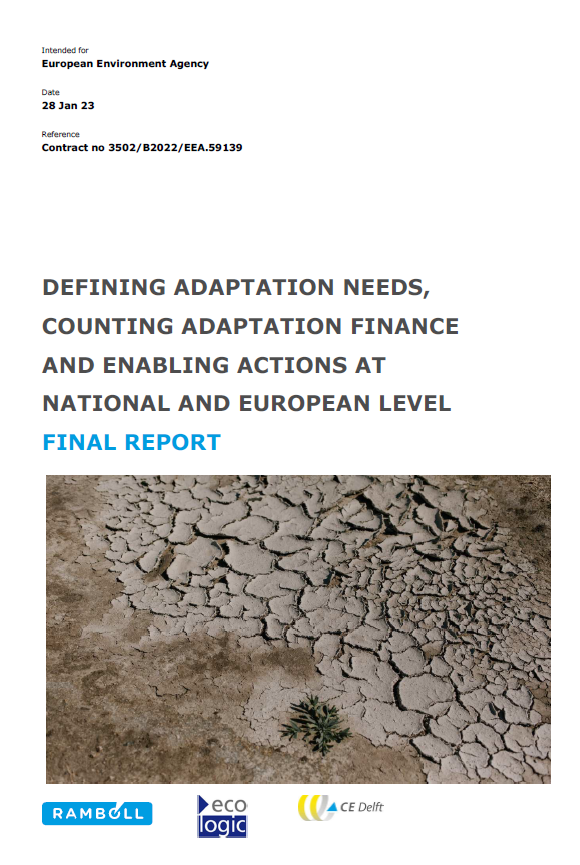Defining Adaptation Needs, Counting Adaptation Finance and Enabling Actions at National and European Level
- Publication
- Citation
European Environment Agency (ed.) 2023: Defining adaptation needs, counting adaptation finance and enabling actions at national and European level. Final report. Ramboll Management Consulting, Ecologic Institute, Frankfurt School: Brussels, Berlin, Frankfurt am Main.
The report analyzes in detail how adaptation budgets are tracked both at EU level and in national policy documents. Particular attention is paid to the European Commission's use of climate coefficients to quantify the climate-related orientation of budget items. While this method, which is an adapted version of the Rio markers, attempts to show the relevance of spending with regard to climate targets, it has met with criticism as it often does not clearly separate the specific differences between adaptation and mitigation targets. The discrepancies in budgeting and the challenges of clearly allocating funds to adaptation measures versus mitigation measures are discussed in detail and critically scrutinized.
Importance and challenges of enabling activities for climate adaptation
The report goes into further detail on enabling activities that are considered essential for achieving the climate adaptation goals. These activities should directly support other measures and thus make a significant contribution. A key requirement is that these activities must not undermine long-term environmental goals, which is assessed by considering the life cycles of the assets concerned. It is emphasized that careful consideration is required to ensure that the activities not only provide short-term solutions, but are also sustainable in the long term. The report discusses various definitions and interpretations of enabling activities and their assessment in the context of the EU taxonomy.
Risks of double counting and avoidance of mismatches
The final part of the report discusses the potential risks of double counting in the systems for recording adjustment costs. It explains how such risks can be mitigated through improved methods of data collection and processing. The report also addresses the issue of maladaptation, where adaptation measures can paradoxically increase vulnerability to climate impacts. The report presents strategies for avoiding maladaptation and promoting true resilience to climate change through flexible and adaptive measures.
Overall, the report provides a critical and in-depth analysis of current financing and implementation practices for climate adaptation measures in Europe and offers strategic recommendations to optimize these processes.



